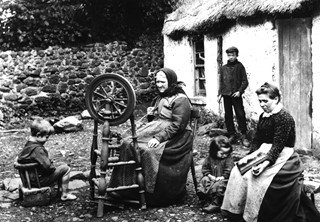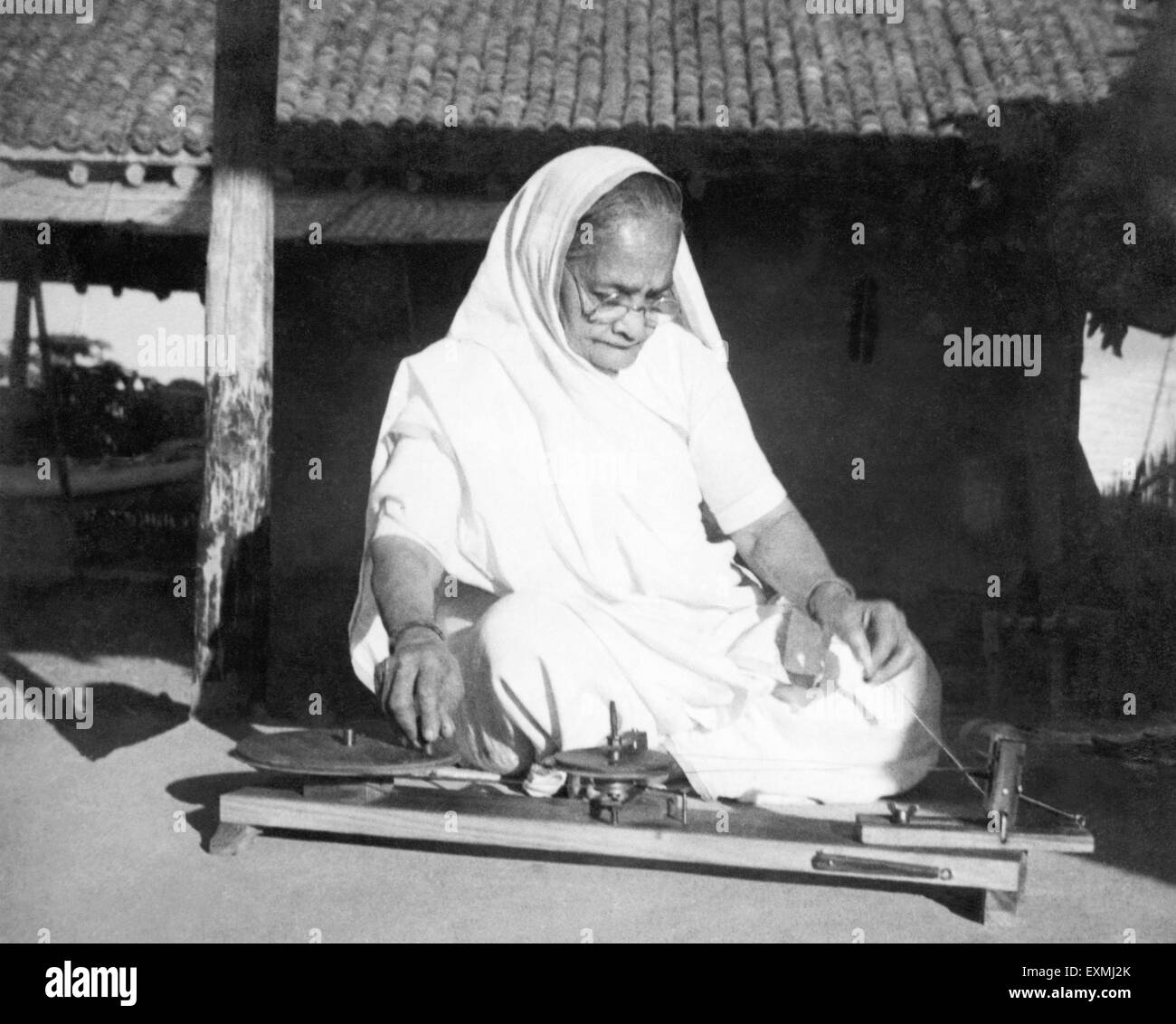Now that my introductory spinning course is over, I feel a bit more equipped to try to tackle the great subject that is spinning. This notable concept post is going to cover the basic history and methods through which spinning is done, but more extensive notes can be found in my annotated bibliography. My main focus or goal in this research project is not necessarily on the history of this art, but I believe understanding the history and evolution of textile crafts is pivotal to tracking where the modern, Western textile industry has gone wrong. In the same way, it pays homage to cultures that have been doing things sustainably and therefore prevents the adoption of ideas without giving credit where credit is due.
History:
When it comes to the global history of spinning, I have found that different societies and cultures have progressed it both interchangeably with others, as well as completely separate. It seems that some inventions, take the spinning wheel, for instance, made their way across oceans and to different societies by means of communication while other discoveries seem to have progressed alongside each other without actually having any direct influence. I believe that a “complete” history of spinning is rather unattainable given how universal and ancient of a practice it is. However, separating histories by society tends to lend itself to a more complete history than by simply trying to regard it as one singular, global practice. I believe that this applies to any textile craft, which is why I have chosen to separate my studies into different cultures. With that being said, I will try to provide a general history of the aspects of spinning that are universal, or have been universally distributed before breaking into more extensive histories by society.
Historical Overview –
It is believed that the spinning of fiber into string has occurred amongst humans throughout the world for approximating the past 15,000 years. The earliest method of spinning was through the handspindle – I’ll add here the symbolism of how many spinners (including myself) first learn on the handspindle before graduating on to the wheel. In fact, the drop spindle (a form of handspindle) was used for spinning for the first thousands of years of practice. It is believed, but not confirmed, that the drop spindle was invented in ancient Egypt and made its way throughout the rest of the world.
It wasn’t until around 500 – 800 CE that the spinning wheel was invented in West Asia, very likely in India. Usually, this is operated by a pedal which allows the spinner to have both hands free to manage fibers. The spinning wheel made its way over to Europe in the 13th century CE and was subject to a variety of adaptions throughout its use in daily life.

The Industrial Revolution’s beginning in the late 18th century saw the Spinning Jenny invented by James Hargreaves in England. This invention is credited with beginning the great shift of the textile craft from cottage industries to full blown mills. This has since evolved into full-scale spinning mills that have relocated in places all over the globe and was the first step in the sudden cease in production of hand spun fiber in Western textiles.
Spinning in the British Isles:
Spinning is known to have taken place in the British Isles for at least the past 3000 years. Though, once again, the spinning wheel would have not made its way to the Isles until the late Middle Ages/Early Renaissance. Like in many cultures, the art of spinning was considered to be a woman’s craft and often accompanied the symbolic shift from girlhood to womanhood.

In Ireland and Scotland specifically, the spinning wheel was adopted into every day life and became a massive part in the growth of cottage industries such as Donegal yarn and Harris Tweed. Traditionally, the most common fibers spun in these areas were wool and flax. Over time, different mechanisms where adapted to best suit productivity.

When the flax wheel was brought to co. Donegal (nearly 6000 where imported in order to promote the growth of the linen industry), it was adapted in order to spin wool and became an element of social life in rural Donegal.
Spinning in India:
The spinning wheel is thought to have been invented in India somewhere in between 500 and 1000 AD and has since been subject to quite a few changes both through industrialization and through the Swadeshi movement in the early 20th century.
Europe had a colonial presence in India directly after the Moghal Rule in the 16th century, though Britain did not rule it as a colony until the early 1700’s. Through this colonization, Britain shifted the economy from finished spun products to raw materials. This, alongside new laws that limited the profitability of Indian-spun textiles, limited the advancement of spinning beyond industrial machinery brought in by England for some time.

When the Indian independence movement came into full swing in the early 1900’s and Gandhi began promoting the Swadeshi movement, a new spotlight was shone on textiles that were hand spun and woven outside of the Western mode of production. Through this, the charkha saw new modes of creation that were designed to keep up with more modern production demands. Because Gandhi advocated for increased productivity of the spinning wheel an improved version of a wheel called ‘Bardoli Charkha’ was created by standardizing parts to increase productivity:
1) the circumference of the driving wheel was fixed
2) Bush bearings were provided in the center of driving wheel to facilitate its easy rotation around the axle of the wheel
